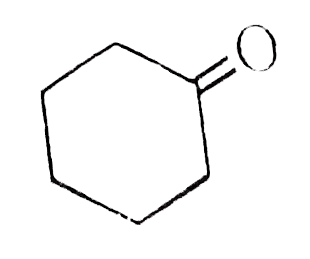Alkenes undergo electrophilic addition reactions. Electrophilic addition to unsymmetrical alkenes involve the formation of a more stable carbocation intermediate in the first step which is rate determining and carbocation is then attacked by a nuclephile to form product
major product formed is


The correct Answer is:B
Step by step video, text & image solution for Alkenes undergo electrophilic addition reactions. Electrophilic addition to unsymmetrical alkenes involve the formation of a more stable carbocation intermediate in the first step which is rate determining and carbocation is then attacked by a nuclephile to form product HO-CH_(2)-CH_(2)-CH_(2)-CH=CH_(2)underset(NaHCO_(3))overset(I_(2))rarr major product formed is by Chemistry experts to help you in doubts & scoring excellent marks in Class 12 exams.
Updated on:21/07/2023Topper's Solved these Questions
- TEST PAPERSBOOK - ALLENCHAPTER - TEST PAPERSEXERCISE - CHEMISTRY
19 Videos
- TEST PAPERSBOOK - ALLENCHAPTER - TEST PAPERSEXERCISE - part-2 Chemisty
18 Videos
- TEST PAPER 4BOOK - ALLENCHAPTER - TEST PAPER 4EXERCISE - CHEMISTRY
45 Videos
- THERMODYNAMICS BOOK - ALLENCHAPTER - THERMODYNAMICS EXERCISE - EXERCISE -4
18 Videos
Similar Questions
Knowledge Check
Alkenes undergo electrophilic addition reactions. Electrophilic addition to unsymmetrical alkenes involve the formation of a more stable carbocation intermediate in the first step which is rate determining and carbocation is then attacked by a nuclephile to form product
 +H2OH2SO4−−−→ ProductAThe major product is
+H2OH2SO4−−−→ ProductAThe major product is BThe major product is
BThe major product is CMajor product give +ve Tollen's testDMajor product give +ve iodoform test
CMajor product give +ve Tollen's testDMajor product give +ve iodoform testAlkenes undergo electrophilic addition reactions. Electrophilic addition to unsymmetrical alkenes involve the formation of a more stable carbocation intermediate in the first step which is rate determining and carbocation is then attacked by a nuclephile to form product
Which one of the following alkene reacts most readily with HCI?ACH2=CH−ClBCH2=CH−O−CH3CCH3−CH=CH−CH3D
CH3O−CH=CH2CH3OH−−−−→H+product formed is
AAcetaBHemiacetalCAlcoholDaldehyde
CH2−CH2−CH2−CH3Br2/hv−−−−→
Major product in the above reaction is:
View SolutionCH3CH3+CH2N2hv−−−→orΔ
The product of the reaction is
View SolutionCH3MgBr(i)CH3ONH2−−−−−−−−→(ii)H+Major product is:
View Solution(CH3)3CCH2−CBr(CH3)2Heat−−→
The major product is
View SolutionIn the reaction
(CH3)3C−O−CH2CH3+HI(1mole)heat−−→ the products formed is (are)
View Solution
